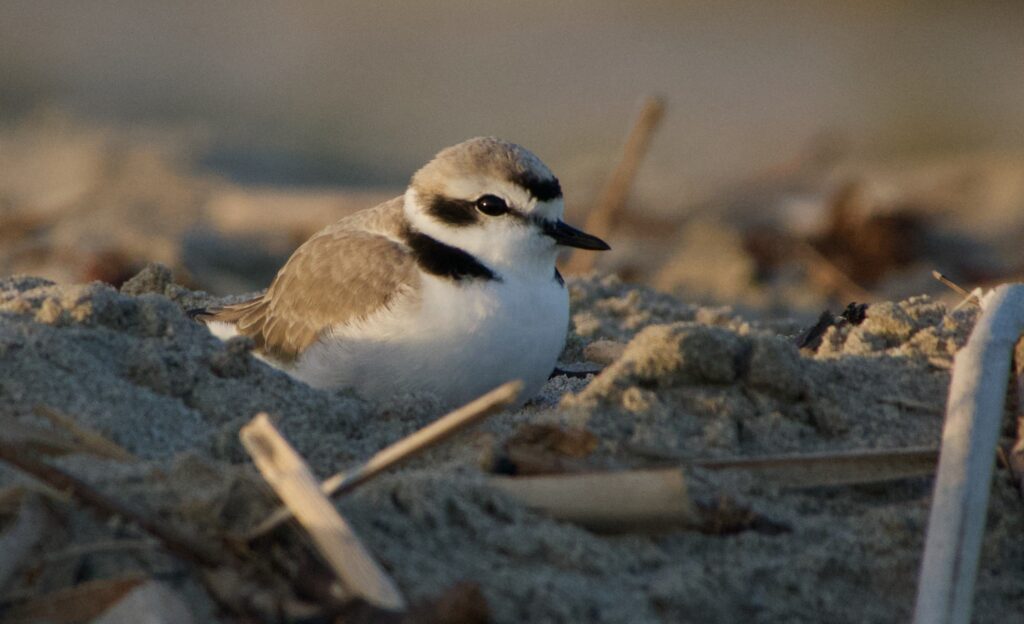
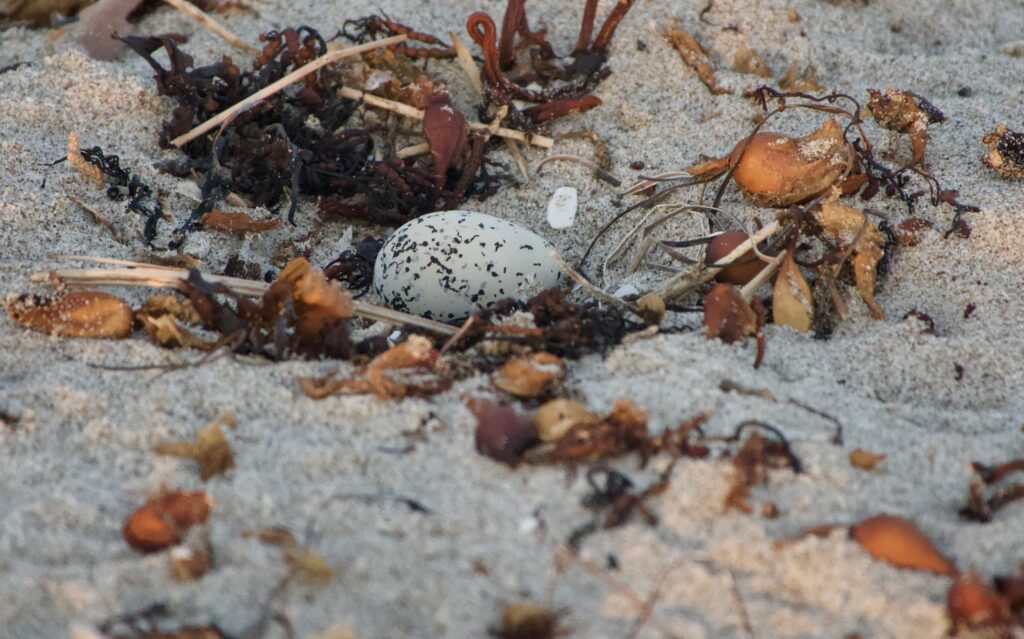
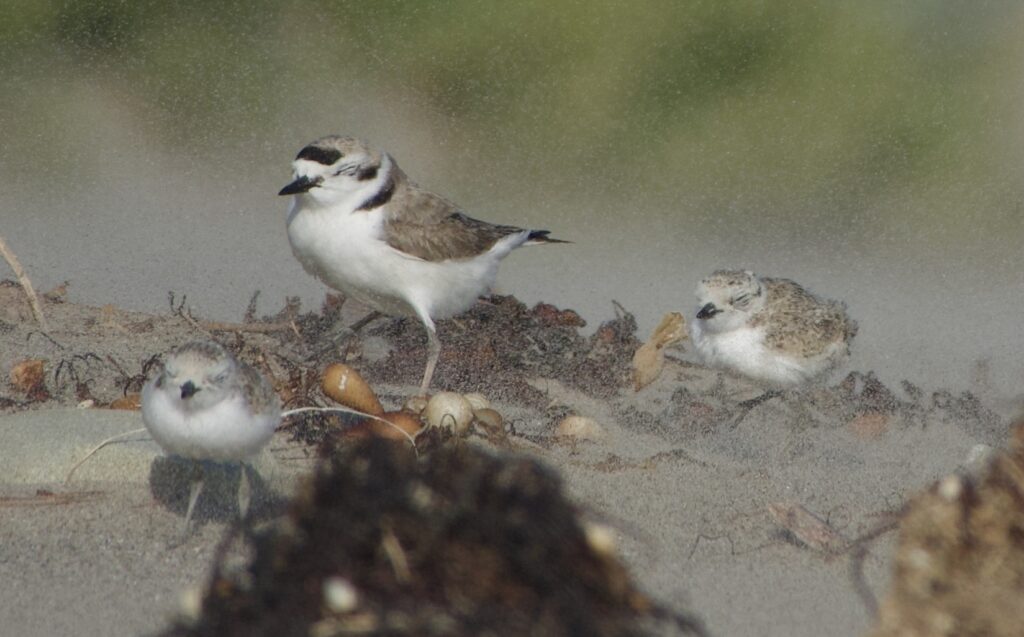
Exciting things have been happening with the snowy plovers at Carpinteria State Beach.
I’m going to do my best to summarize the current situation, but I haven’t visited the beach as often as I did for last summer’s nesting, so I’m a little fuzzy on some of the details. I’ll do my best to tighten up the information when I have a chance to talk to the State Park biologists.
So far there have been four nesting attempts this year. To help me refer to them I’m going to number them sequentially and talk about each of them in turn.
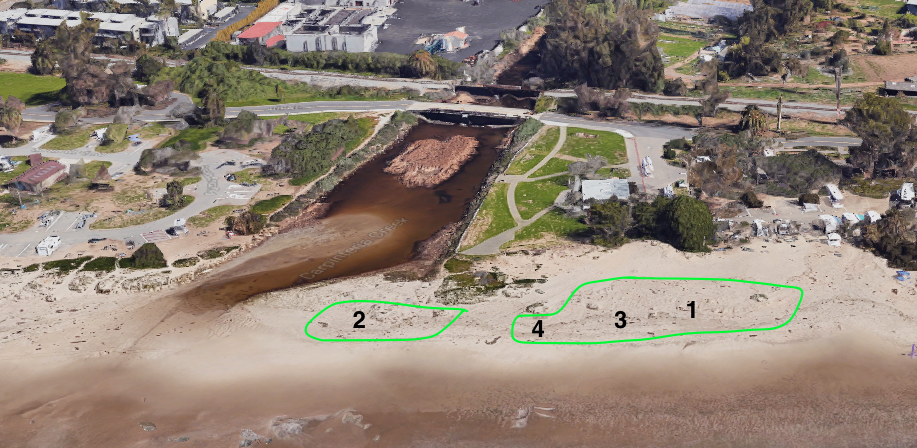
Nest 1

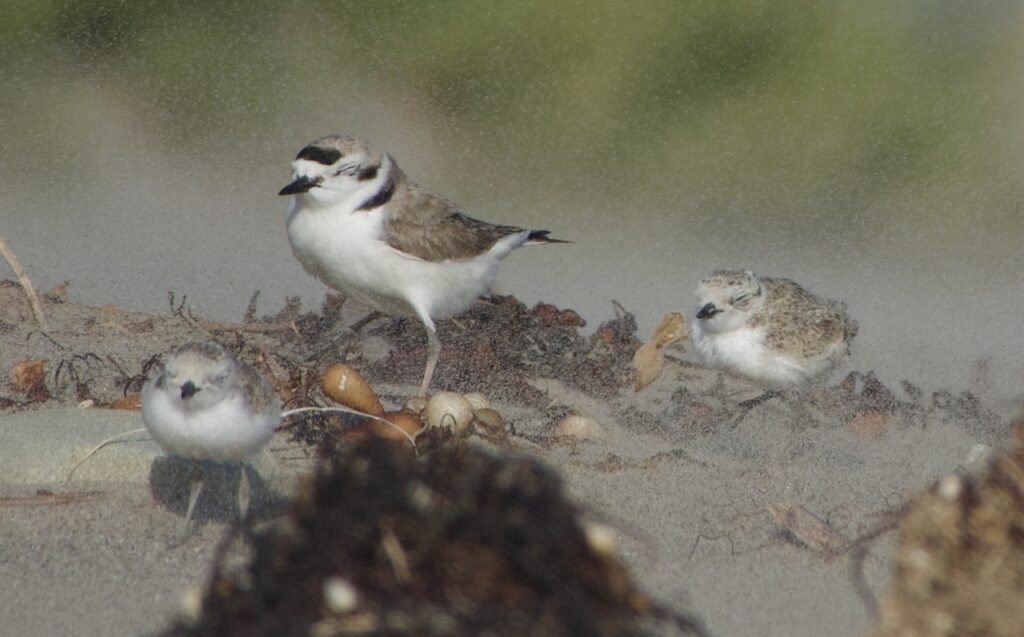
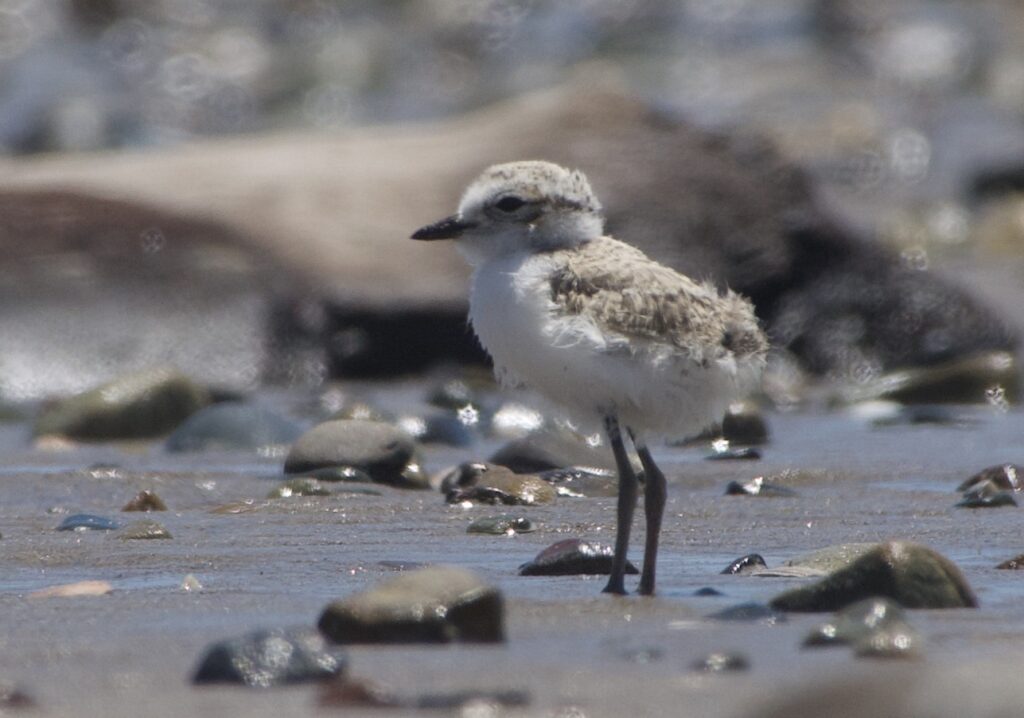
Adults: banded female pa:yb, unbanded male
Established/discovered: March 21, 2022
Hatching: April 16 (roughly; I need to confirm)
Expected fledging date: May 16 (want to confirm. they seem small to me to be ready by then.)
Three chicks hatched initially, but sometime within the next 2 days one was preyed on by an American crow. Female parent pa:yb had left the area by April 19. The two remaining chicks were still actively feeding on the beach with their male parent as of May 9.
Nest 2
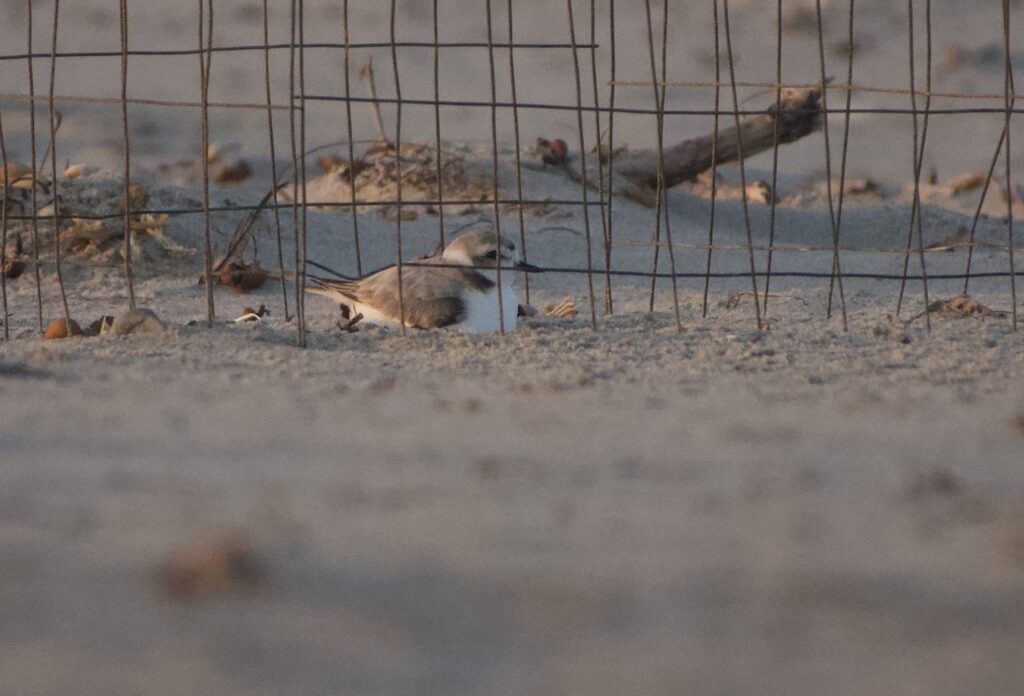
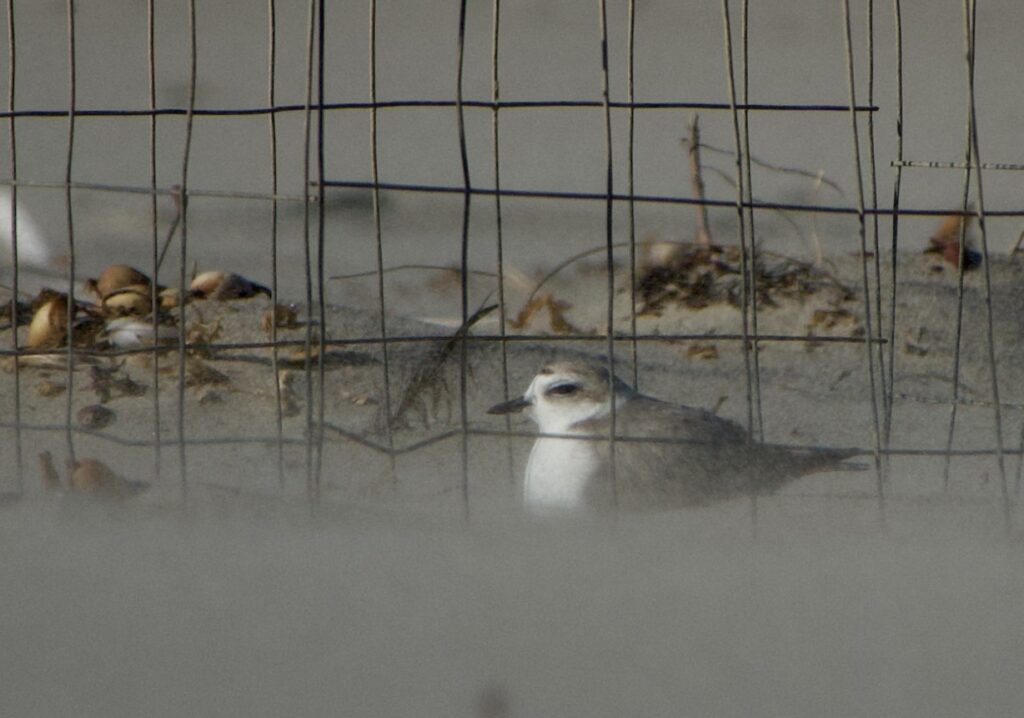
Adults: both unbanded?
Established/discovered: April 19 (need to confirm)
Expected Hatching: May 17 (need to confirm)
This nest is the next due to hatch. It is furthest west, close to the mouth of Carpinteria Creek.
Nest 3
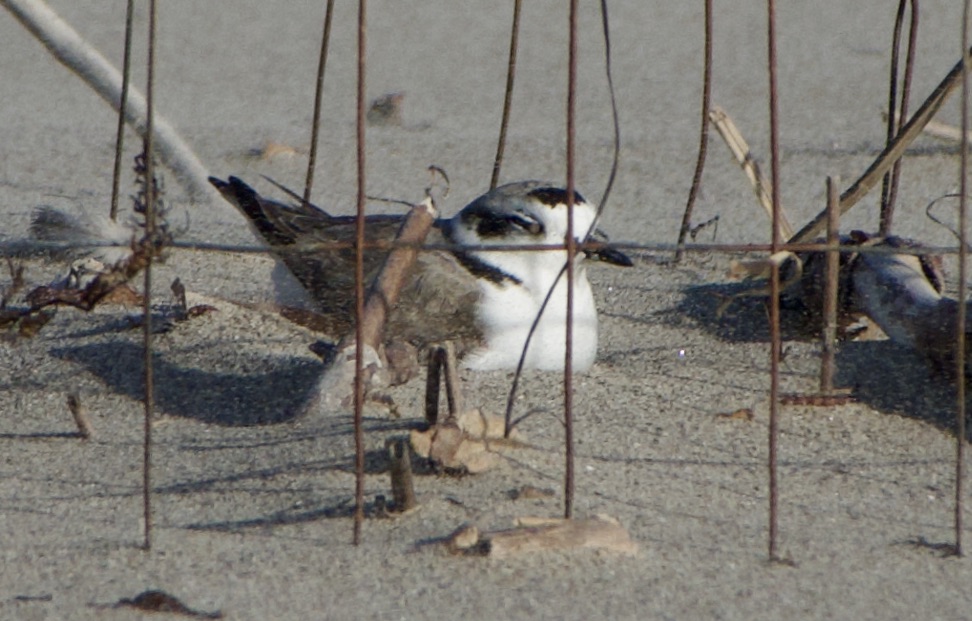
Adults: both unbanded?
Established/discovered: May 5? (Need to confirm. I first saw it on May 7, but I hadn’t visited since April 29 at that point.)
Expected Hatching: June 2 (need to confirm)
This nest is in the eastern roped-off area, but west of the location where nest #1 was.
Nest 4

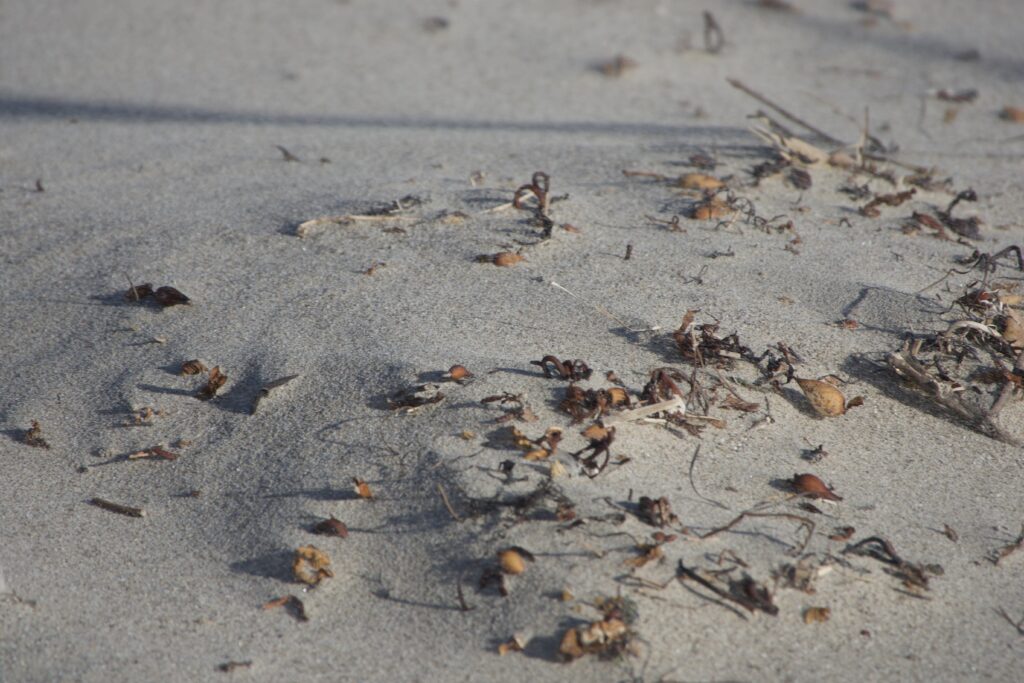
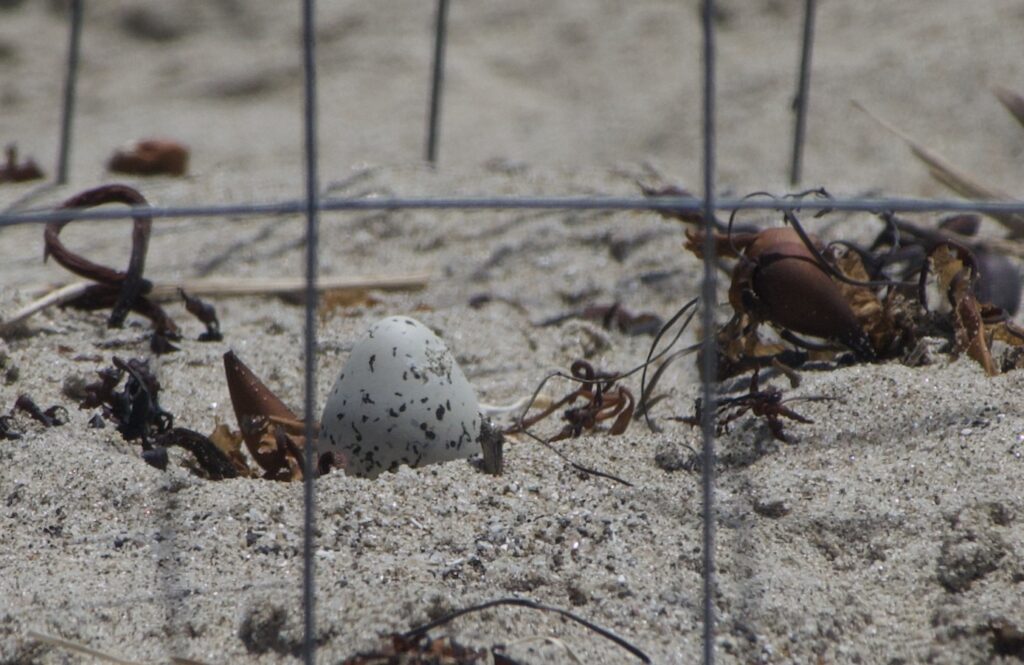
Adults: banded female py:rr, unbanded male
Established/discovered: May 7
This nesting attempt was discovered by Jenny Slaughter and Craig Murray on Saturday, May 7, when they noticed a single egg in a nest scrape in the open walkway between the two roped-off areas. After a flurry of attempted contacts with plover officials, a temporary extension to the eastern roped-off area was established to prevent accidental trampling of the nest.
Plovers typically lay 1 egg every 1–2 days, and don’t begin full-time incubation until the third egg is laid. So this nest was likely discovered while py:rr was still in the egg-laying process.
The next day (Sunday, May 8) there was a strong westerly wind in the afternoon with lots of blowing sand. Unfortunately the nest filled in with sand and its egg was buried.
Today (Monday, May 9) State Park biologists were able to dig out the egg. They placed a protective exclosure over the nest site and placed the egg back in the nest location. The egg was placed vertically; the idea is that if the parents return to the nest and reclaim the egg they will reposition it on its side. If the egg is still vertical tomorrow, plover biologists will remove the egg and convey it to the plover captive-rearing program at the Santa Barbara Zoo, where it hopefully will be viable.